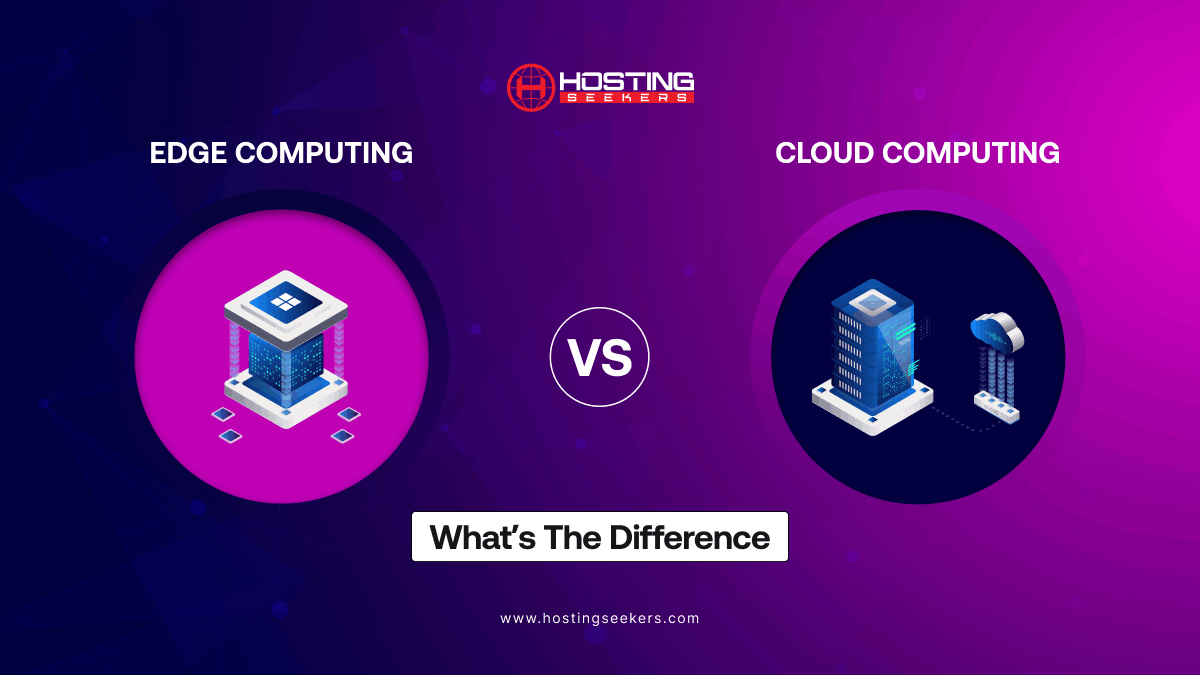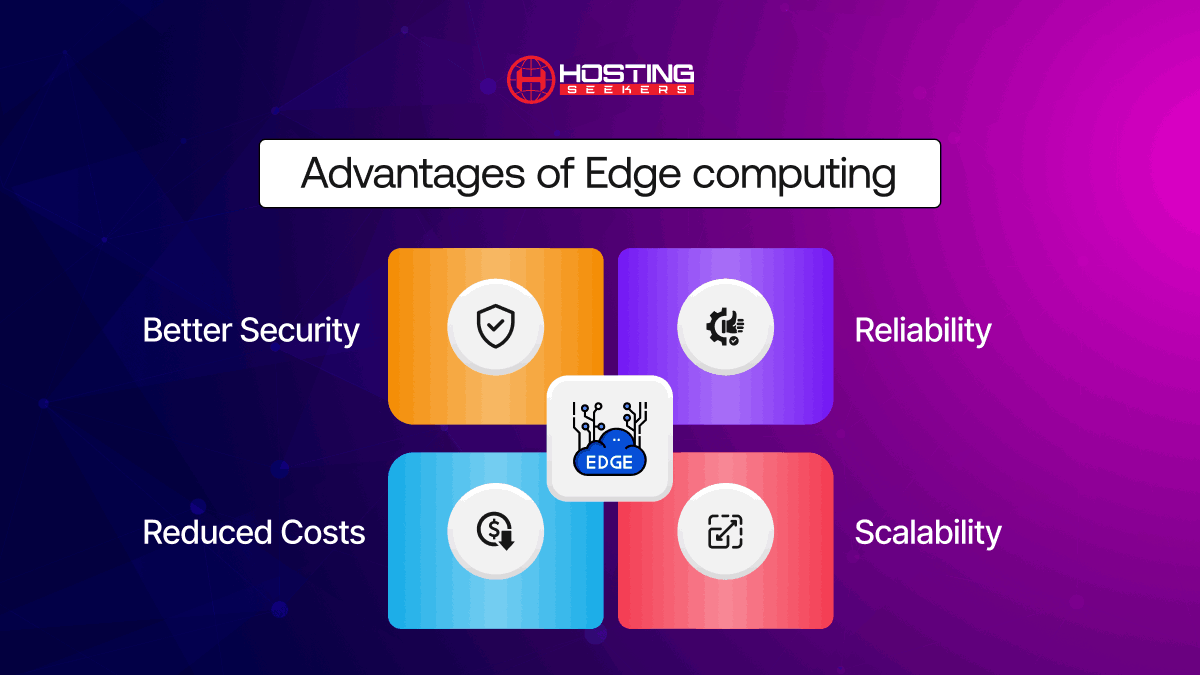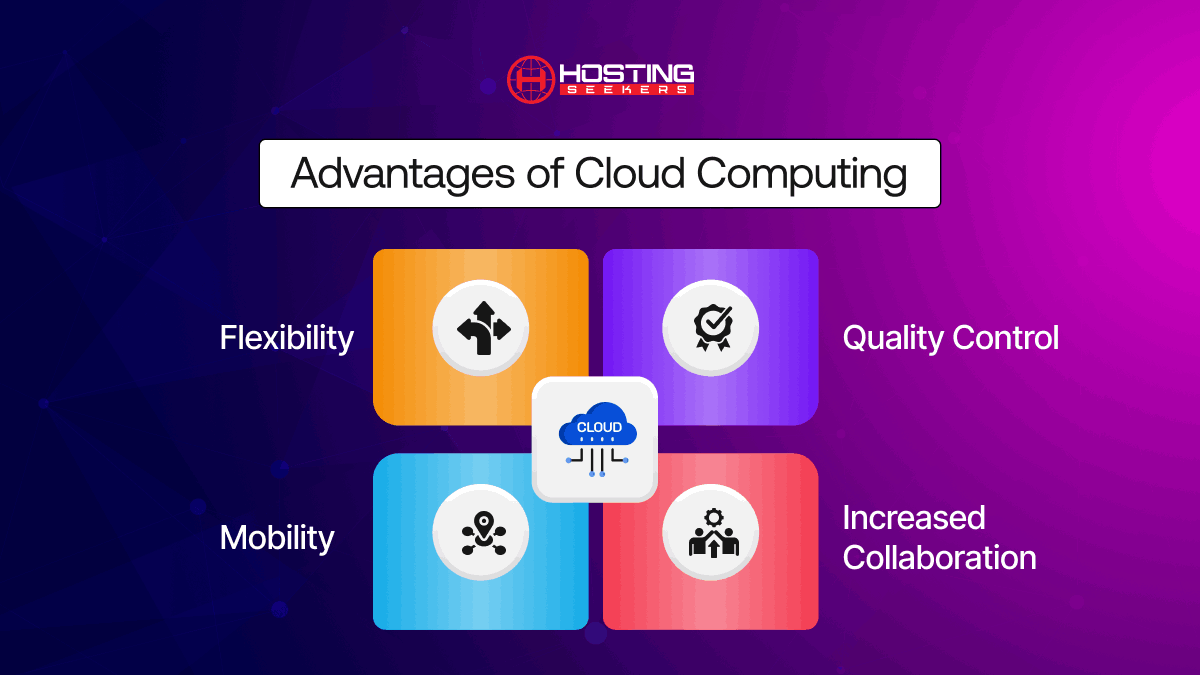
Edge Computing vs Cloud Computing: What’s The Difference
Cloud Industry Comparison Published on Date: November 6th 2024Edge and cloud computing are the future technologies that optimize performance, decrease price, and expand data processing abilities. Edge computing is decentralized computing that combines computational resources closer to the data source or endpoint. It also includes processing data locally or at edge servers, boosting response time, and reducing delays in autonomous vehicles and IoT devices.
Cloud computing is a centralized model that depends on remote data centers to store and process data. It provides accessibility, scalability, and efficiency but can face delays due to data transfer to and from the cloud. Also, cloud computing is utilized for data storage, web services, and enterprise apps. In this article, we will explore Edge computing vs. Cloud computing and help you understand the key difference between them.
Table of Content
What is Edge Computing?
Edge computing is a distributed computing architecture that brings computing and data storage near the data source. Data processing occurs at the edge of the network, near the device that generates the data, as opposed to a central location like a data center.
When transferring more data to a processing center, decreased delay and bandwidth required are desired outcomes of edge computing. In addition, IoT devices, augmented reality/virtual reality (AR/VR) systems need low delay benefits mainly from edge computing.
Advantages of Edge Computing
1. Better Security
Data Security has become need of an hour today. Edge computing helps by processing sensitive data on user devices, not in central locations. Businesses that manage and handle personal data see significant security benefits from edge computing. Keeping vital data close to hand reduces cyber-attack risks. In addition, firewalls and encryption on edge devices also help to protect against illegal access.
2. Reliability
Edge computing is considered more reliable as it processes data where it is created, leading to fewer service breaks. Also, IoT –enabled sensors can also improve workers‘ safety. They track workers and alert them about nearby hazards. Moreover, it reduces accidents and increases efficiency.
3. Reduced Costs
Traditional cloud infrastructure mostly need more bandwidth to transmit a larger amount of raw data to centralized data centers for processing. Edge computing can save your business costs. Also, with Edge computing, data processing takes place locally, which means minimum data needs to be sent to central servers, reducing bandwidth requirements and associated costs.
4. Scalability
As businesses expand, the best-edge computer systems can seamlessly scale to meet rising demand. New nodes or edge devices can be added without requiring significant overhauls of centralized infrastructure, making expanding data processing capabilities in desired locations easier.
What is Cloud Computing?
Cloud computing is among the top rated and popular on-demand computing resources. Software and Data are stored on remote servers, enabling access from anywhere with an internet connection.
This eliminates the requirement for traditional on-premises IT infrastructure and allows users to benefit from the expertise, flexibility, and capabilities of cloud service providers.
Advantages of Cloud Computing
1. Flexibility
If your current IT solution is struggling with data storage issues, they can hamper business goals and satisfy clients. Alternatively, by depending on an outside business to take care of all IT hosting and infrastructure, you will have more time to focus on your business targets, which will directly impact your bottom line.
2. Mobility
Around 4.88 billion people use smartphones across the globe (Source: Backlinko) cloud computing enables mobile access to corporate data through smartphones and devices. Employees with busy schedules and working remotely can utilize cloud computing for working at their convenience.
3. Increased collaboration
If your business has two employees or more. Some cloud-based services even offer collaborative social spaces to connect employees across your business, therefore raising interest and engagement. Additionally, Collaboration may be possible without a cloud-computing solution, but it will never be as easy, nor as effective.
4. Quality Control
Low quality and inconsistent reporting can hamper poor quality. Therefore, cloud computing solutions stores all documents that are stored in one place and in a single format.
With everyone accessing the same data, you can maintain consistency in data, avoid human intervention and also have a clear record of any updates or revisions. Also, managing data and information can be confusing, cloud computing helps to organize, manage and handle data effortlessly in standard format.
Understand Cloud Computing better, Read our Guide on Role of Virtualization in Cloud Computing
Edge Computing vs Cloud Computing: Comparison Table
Let’s compare Edge Computing vs Cloud Computing comparison table that can help you to understand both the solutions.
Features |
Edge Computing |
Cloud Computing |
| Data Distribution | It distributed data across various geographies. | Data is stored in single location and geographies. |
| Focus | Edge computing pays attention to real-time data processing. | It focuses on more amounts on unstructured data processing. |
| Data Processing | The Data Process takes place at the edge of network. | The Data Processing takes place in the cloud. |
| Storage | It includes local storage. | It includes remote storage. |
| Cost-Effectiveness | Edge computing is less cost-effective. | Cloud computing is more cost effective as it centralizes resources in a single location. |
| Use Cases | Edge computing is best suited for devices that need fast connections and low delays. | Cloud computing is more cost-effective as it centralizes resources in one location. |
Edge Computing vs Cloud Computing: Key Differences
The primary difference between cloud computing vs Edge computing depends on their architectural principles and deployment models. Also, edge computing process data at the edge of network, making it well-fitted for the apps like industrial automation, autonomous vehicles, and real-time analytics. Whereas in contrast, cloud computing holds expertise in scenarios needing collaborative tools, scalable infrastructure, and data intensive workloads like machine learning and big data analytics.
1. Security and Privacy
Security is one of the main aspects in Cloud vs Edge computing solutions. Edge computing provides extended data privacy by processing sensitive data locally, reducing exposure to potential security threats at the time of transition.
Whereas cloud computing providers offers high security measures to protect the data stored in the centralized data centers, providing advanced multi-factor, encryption, authentication and compliance certification to make sure data integrity and confidentiality.
2. Reliability and Connectivity
As in Edge computing data is processed locally it considered more reliable with restricted or limited environment. Also, edge computing can continue to operate if the network connection is slow or lost. In contrast, cloud computing is mostly dependent on stable and good connectivity. Therefore, if the connection is interrupted, access to data and services in the cloud can be disrupted.
3. Resource Utilization and Efficiency
Considering resource utilization in edge vs cloud computing, Edge computing Optimize resources by processing data locally, reducing the burden on network infrastructure, it’s mainly useful in environments where bandwidth is limited, like remote industrial sites. In contrast cloud computing utilizes extensive shared resources at data centers, enabling more processing power but it also needs transferring large data volumes, which can strain network resources.
Conclusion
After knowing the difference between Edge computing and Cloud Computing and understanding the main distinct points between these two paradigms and their respective business, strengths can make robust decisions to architect efficient and resilient IT infrastructure that fulfill the demands of today’s highly competitive world. Most companies adopt hybrid cloud models, leveraging both cloud and edge capabilities to balance the advantages of each.
Frequently Asked Questions
Q 1. What is the difference between cloud and edge computing?
Ans. Cloud computing processes data in centralized data centers, while edge computing processes data closer to the data source, minimizing latency and bandwidth.
Q 2. Is Edge the Same as Cloud?
Ans. No, they’re different. Edge computing is focused on local, near-device data processing, whereas cloud computing is centralized.
Q 3. What is the concept of edge computing in cloud computing?
Ans. Edge in Cloud Computing: Edge computing complements cloud computing by handling time-sensitive data locally, reducing the load on cloud servers and improving response times.
Q 4. Will Edge Computing Replace Cloud?
Ans. Unlikely. Instead, edge computing will work alongside cloud computing, especially for tasks that need low latency.
Q 5. What are the disadvantages of Edge computing?
Ans. It has challenges like security risks, high infrastructure costs, limited processing power, and complex deployment and maintenance.

